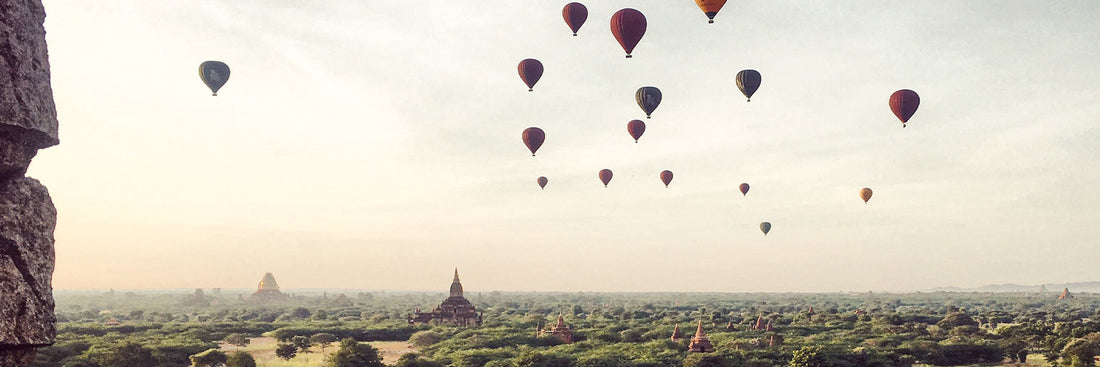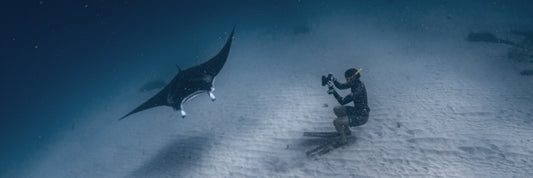
Magical Myanmar | Yangon, Kalaw to Inle Lake Bagan
Share
In mid-November of this year, I escaped from the office (again) and made for Myanmar with two very good friends of mine. Myanmar has been high up my wish list for a few years now as I'd heard such wonderful reviews from travellers around the world who'd had the fortune to visit. A picture had been etched in my mind of Thailand without the tourists and the allure was just too strong to ignore, especially given the potential ticking time bomb before it becomes part of the South East Asian loop. In this post I've tried to capture a snapshot of each of our destinations along with a few tips for those following in our footsteps. Ours was an 8-day round trip that looked a little something like this:
Yangon > Kalawa > Nyuang Shwe > Bagan > Yangon
Yangon
Highlights: temples/ pagodas, street-life & colonial architecture
| Downtown Yangon
With a fascinating history and an enchanting buzz to the streets, Yangon quickly became one of my favourite cities in Asia. The narrow, motorbike-free roads are awash with colour and the sounds and smells of South East Asia. The colonial buildings lining the streets allow it to compete with Hanoi's Old Quarter in terms of charm, and the locals going about their day provide the atmosphere - without the hassle you might have come to expect from cities in the continent.
Despite the alien culture, Yangon is comfortably the safest feeling city I've ever visited in the region - a stark contrast to the likes of Manilla and Bangkok, where it's not unusual for a slight sense of unease to accompany the hustle and bustle. We stayed at Scott's on 31st Street, which was a lovely little haven and still right in the mixer - Scott's is nestled amongst the most fascinating streets, towards the top of Downtown Yangon and a short walk to the markets.
| Shwedagon Pagoda
Whilst the old town can entertain you with its endless barrage on the senses, the centrepiece of the city is the Shwedagon Pagoda, an imposing, 326-foot-tall gold temple, which is a short taxi ride away from Downtown. We arrived just before sunset, hoping to avoid the heat of the day and get some nice dusk light for our snaps. Entry cost 8,000 Kyat and, for those wearing shorts, you can rent a Longyi for a refundable 3,000 Kyat. Allow a few hours to stroll around the pagoda, taking in the monks, incense and surrounding temples. The sheer size of the pagoda is surpassed only by the gleaming gold finish, further establishing it as the hero of the Yangon skyline and making it a stunning spectacle.
| Kandawgi Lake
With Shwedagon looming radiantly at its shore, this man-made lake boasts a stunning backdrop and lends its surface to serve up another dazzling perspective of Yangon's most extravagant icon. Although certain sections of the lake's shore are a little tacky, generally you'll be treated to a serene stroll along the rickety pathways, allowing you to take in the scenery. We arrived early to avoid the heat of the day and were rewarded by having part of the lake largely to ourselves. Sections of the lake's perimeter are free to access, but there is a small fee elsewhere, one for you and one for your camera.
| Central Station
Well worth a visit, Central Station's hustle & bustle, coupled with its charming architecture, offer the chance to immerse yourself in the city of Yangon. Most recently rebuilt in 1954, its traditional, Burmese-style facade, gloomy archways and railway scenes all make for a photographers dream and the dusty winding streets that sprout from it are an adventure in themselves.
Kalaw to Inle Lake
| Getting There
Our next stop from Yangon City, was Kalaw, a popular destination for those heading out on a trek to Inle Lake. We arranged to travel by night bus to optimise our time and save the need for accomodation. We arranged tickets with Scott's Hostel on the day and, after a short shuttle trip away from the city centre, boarded our JJ Express, which, having travelled on numerous night busses around South East Asia, was an absolute delight. Tickets cost us around $30USD and the journey took about 10 hours; leaving at 6pm and rocking up to the mountain village of Kalaw at 4am.
| Kalaw
Arriving at 4am, and without a trek pre-arranged, we were kindly pointed in the direction of a 24/7 tea & coffee house, in which we passed the time until sunrise with cards & some refreshments. A misty sunrise followed as we strolled the enchanting streets, taking in the magical scenes as young monks shuffled here and there and cafes cooked up fresh Indian sweets.
Kalaw was only scheduled as a stop to join the trek, but those couple of hours were seriously special in their own right! We then rocked up to Sam's Trekking, having seen a couple of recommendations, and easily got ourselves signed up to a 2-day-1-night trek to Inle.
Sam himself, the 76 year old founder, was very personable and helpful as we enjoyed our time in the town waiting for the rest of the trekkers to form. The trip cost us around $34USD (35,000KYAT) and included all food and accommodation, overall we were extremely happy with the setup, staff and itinerary.
| Village Life
We left the magic of the village by means of a small, open mini-bus with four others (Sam's take groups no bigger than 7) as we hurtled along the dusty tracks and through the colourful countryside. 30 minutes on and we hopped off the bus and set off for our first stint in hot and sunny conditions.
Rapeseed, chillis, sugar and corn made for a varied an interesting scene from the off and we tramped along happily for about 2 hours before rocking up to the first village. The Pa-auw people populate the village, which is about 100-strong. The Pa-auw people occupy numerous parts of the region and were wonderfully friendly if a little shy. Tea and snacks refuelled us for the next leg, which included a small stint of wheat-beating and more rolling countryside.
The rest of the day's trekking (no more than 3 hours on top of the initial 2) was split up by a delightful lunch at the next village - noodles, guacamole, fruit and crisps - and punctuated with our arrival through the pine and bamboo forests to our village of rest for the night. An enchanting village, where the locals go happily about their business, was all the better for the misty sunset and the simplicity of the facilities. Another long-drop in an out-house and a shower consisting of a bucket and saucepan to freshen up; we were set for the night once we'd devoured more delicious grub.
Pancakes for breakfast and an even mistier sun show than the night before and we were off trekking down past the monastery and through the dew-ridden spiderwebs and fog-shrouded hills. The sun burned the mist away as we entered the Inle Lake Park (at a cost of 13,500KYAT). Although an awesome view from the top, the route became less scenic from there-on and we made it down to the marshes surrounding the lake-proper via a refreshment stop (Myanmar has some serious local chocolate options!).
Our final stop prior to Inle Lake was yet another wonderful lunch, stacked with fresh fruit, guacamole and meats. We said farewell to our wonderful guide, Nwe Nwe, and hopped aboard a long canoe to be whizzed through the floating village and into the lake proper!
| Inle Lake
The boat journey itself was great as we weaved through the marshes, passing other canoes chugging along serenely. As the marshes open up they become lined with wooden buildings and, inevitably, the opportunity arises for the locals to hound you for gifts. We jumped off and, despite the incessant attention from the shop owners, were more than happy to depart with some cash for their silverware.
We opted to skip the second stop and looked on in awe as the reeds parted to reveal the vast lake proper. Fishermen and 'fishermen' are dotted about the lake, some fishing with modern tools, some posing with the traditional nets for cash. The show is a little tainted by the request for tips from those playing up for the cameras but the whole scene is pretty mesmerising.
Having taking in the fishing scene, the boat made for the far shore and dropped us in Nuang Shwe for the night. There are plenty of accommodation and restaurant options in the town and we made for a pre-booked guest house, which was about 10 minutes from the drop-off point. We just managed to duck into the accommodation before the rain came down, hard. So that was it for the day and we hit the comfort of the beds for a decent kip (be prepared a simple sleeping arrangement in the village!).
Bagan
| Getting There
We flew from Nuang Shwe with relative ease; the drive to the airport from the town takes about an hour (taxi cost 20,000KYAT) and the simplicity of the airport is fun, if a little alarming! The flight takes about an hour, but you may be waiting a while in the airport with little information (like us), but a two hour delay didn't seem remotely unusual to the airport staff!
| Sunrise & e-bikes
Life as a tourist in Bagan centres around the two most stunning times of day; sunrise being the most dramatic, but also the more inconvenient, especially if you like a lie-in! There are a couple of options with regards to getting to Old Bagan and the temples, but only one way to go once you're there - e-bikes!
We were staying a little outside of Bagan and would often get a taxi from our accommodation to the edge of Old Bagan, from there, the famous e-bikes would be waiting. At around 7,000kyat for the day, there are lots of places to rent them from, we made friends with a fella called Zow's on Thi Ri Pyitsaya 4 St - which is the road with the most hustle and bustle on your way from Nyaung-U to Old Bagan, and a great place to start and end your day.
The e-bikes resemble the classic scooter, without the loud, smelly engine and obnoxious driving styles! They're the most amazing way to weave your way through the sandy tracks that in turn meander around the enchanting temples of Bagan. We did minimal research in preparation but there are plenty of blogs suggesting temples to visit. There are the big ones (such as Shwesandaw, Myauk Guni & Pyathetgi) but these are best to leave till the day time, when the hordes of Chinese tourists aren't milling about. But, there's nothing like hopping on your e-bike and finding your own temples to explore!
One e-bike tip (from first-hand experience): the battery will not last all day! If you would like some tips on which temples to explore, we found two perfect sunrise options:
| Ta Wet Hpaya (The Secret Temple)
The Secret Temple, as it's known, is tucked away amongst the scrub, shrouding it largely from the crowds seeking the larger surrounding temples. Climbable from stairs located within the temple itself (round to the left on entry), the views out over the plains are simply breathtaking, especially as the balloons take to the sky shortly after sunrise. If you're an accomplished climber, you can get a little higher than most, but the locals are a little nervous about you doing so, so take it steady!
| Low Ca Ou Shan
A little further from the balloon action, you'll find the Low Ca Ou Shan Temple, only a short, but adventurous ride from the bigger Shwesandaw Pagoda, Low Ca Ou Shan is another temple that you can clamber up. The view over the misty plains is dotted with impressive temples and makes for another sublime view. It's also worth trying a temple just beyond Low Ca Ou Shan, further away from the main track, which might be even quieter. I think the days of a temple all to yourself at sunrise might be coming to an end, but there are still some secrets to be found!
| Sunset
Although we had great success with our two sunrises, the sunsets were a little less triumphant. Though this was largely due to the lack of colour in them (the cloud seemed to take over at the last minute!), be prepared to battle a touch harder for your space. For those that aren't morning people (which it seems is a lot of you!), the sunset is naturally at a much more friendly time and consequently a decent spot, even on a 'hidden' temple, is hard to come by. The sunset is still undoubtedly worth your time, however, get there early and enjoy the show - the colours were still cool and it is impossible not to fall into a zen like state in the dusty dusk air.
| Accommodation
Seemingly dominated by Chinese tour groups and owned hotels, there are numerous accommodation options. Given we were at the end of such a whirlwind trip, we stayed in what would be classified as a resort (fancy huh?) about 30 minutes e-bike drive from Old Bagan.
The luxury of the room and pool were a nice escape, but weren't even slightly culturally immersive. If you want some comfort to help you unwind after a dusty day on the bikes, Bagan Lotus Hotel (WeStay) is a good option.
Home via Yangon
From Bagan, we were back to Yangon for some city slicking and on to Sydney the following day.
Let me know your thoughts on this post and feel free to comment with your experience and advice, I'd love to go back for a longer stretch of time!



